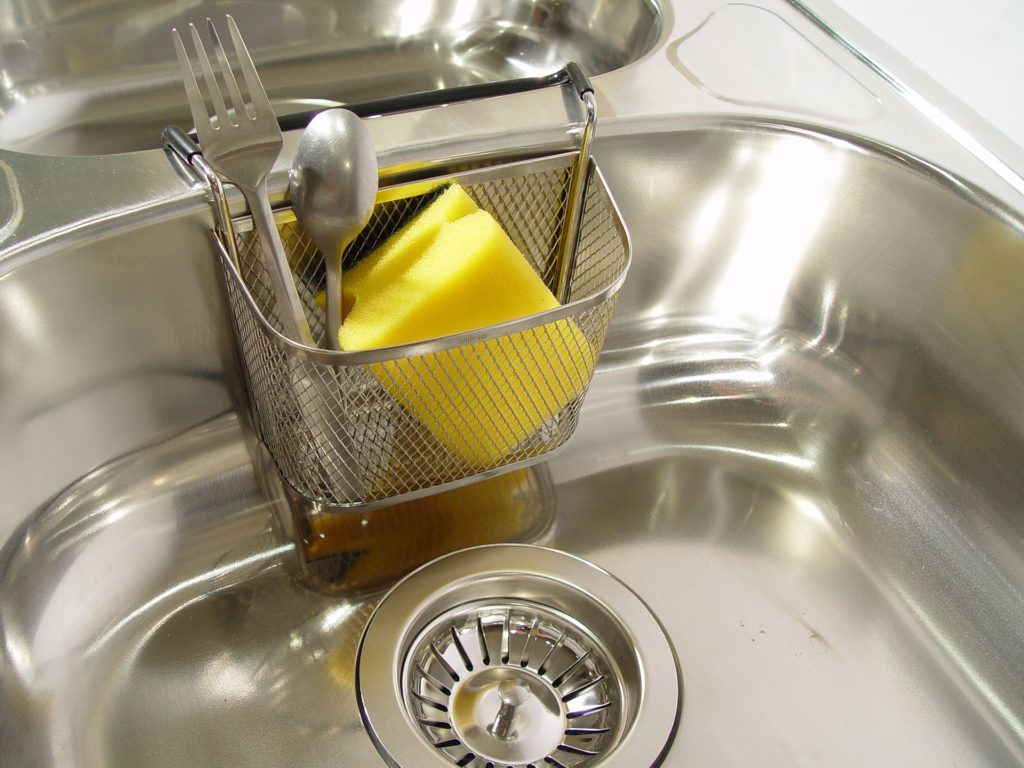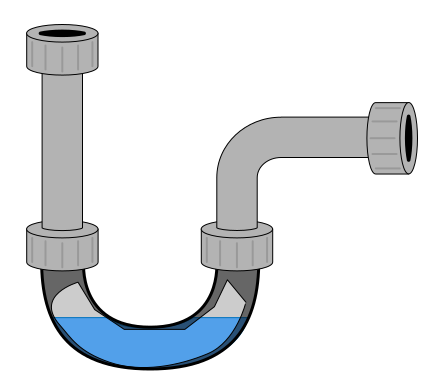
Drains are great! As planners in the early Indus Valley Civilization in Pakistan knew from dates as early as 2400 BC, effective and sanitary drains are just as important as a reliable water supply. Since then, drains have evolved from brick and tile waterways to iron and copper pipes, cement lined pipes, and various plastic solutions. When a drain doesn’t do its job properly, we notice fairly quickly. Read on for a lively discussion of ways to improve your drainage.
The most common drain that we see problems with is the kitchen drain. It stands to reason that the most commonly used drains will probably see problems more frequently. One of the most common drain problems in the kitchen can be directly related to what is being drained there. Here is a basic list of what should go into a drain (listed in numeric order based on priority):
- water
Yes, there are inevitably going to be other substances that end up in the drain pipe attached to your kitchen sink, but these other substances should be kept to a minimum! For example, after cooking your tasty bacon strips and producing vast quantities of deliciously smooth grease, where should this liquid gold be kept? For some, bacon grease serves an important function in cooking and any extraneous pork drippings should be hoarded in tin cans or ceramic bowls. For those people, nothing more need be said. For others though, it should be noted that your bacon juice will eventually congeal into a firm (yet tender!) blob of whitish color. Where we definitely do not want congealed masses, is in the drain work of a house. So, do yourself a favor and wait until the grease has cooled and then scrape it into the trash.
The trash is where almost all cooking byproducts should go and this is because it is the best pathway for solid disposal. To list everything that should not go down your kitchen drain would be silly and unproductive so just refer to the earlier list of what *should* go down the drain if in doubt. However, here are the top ten things to *NOT* send down your kitchen drain:
- Grease! That’s right! Don’t wash grease down your drain!
- Coffee grounds. This stuff builds up into big balls of disgusting brown sludge. Don’t put it down your drain.
- Flushable kitty litter. I didn’t realize this was a thing, but evidently it is. Don’t put it down your drain!
- Eggshells. Eggshells are best to go into the trash. Please just toss them there.
- Rice. You may have heard that it is irresponsible to throw rice at weddings, but did you know that it is also irresponsible to throw rice down your drain? Gosh, let’s just avoid throwing rice at all unless you’re throwing it in the trash.
- Pasta. No good will come of a solid block of macaroni in your kitchen sink drain. Trust me, throw away your leftover noodles.
- Rotisserie chicken. As amusing as it sounds, this apparently needs to be explicitly stated: do not throw a leftover rotisserie chicken into your disposal and expect that the drain can handle it. That’s just silliness and you know it.
- Fruit rinds and pits. The orange peels go in the garbage and so does your peach pit! The garbage disposal cannot shred a stone, so please don’t tempt fate.
- Bottle caps. Again, this seems like common sense, but somehow we see these things come up. If you see a bottle cap slide down the drain, don’t despair or pull your hair! Simply turn off the disposal and the faucet and insert your hand into the drain and remove it. That’s all!
- Pineapple. It has been a while since I was told that one way to “test” a disposal’s functionality was via pushing an entire pineapple down the drain, but here we are. Please don’t “test” the integrity of your appliance. That’s not really a good idea. Ever.
If you encounter a drain clog for whatever reason (hopefully not due to a rotisserie chicken or a pineapple), then keep the following guideline in mind: drains are meant to be serviceable. That means that there should be ways to clear that clog either by hand (put your hand down the drain!) or by disconnecting the piping under the sink.
As a rule, you should start with the easiest stuff first. That means look down the drain to see if there is gunk that you can pull out from the top of the drain. The most common stuff that clogs a bathroom sink is hair. To get at it, you might need a pair of long nose pliers or just use your fingers to get that hair out. Try that first. On a shower or tub drain, a clog is almost always due to hair. Again, find a way to fish out that wad of hair and your drain will hopefully start flowing smoothly once again. If those steps don’t solve the problem, then it is time to open the cabinet doors under the sink (assuming it is a sink!) and check the trap.

The pipe looking thing on the right is known as a drain trap. It is called a trap because it traps any air from backing up and escaping from the pipe (stinky!). However, it will sometimes clog with hair/soap/whatever and you will need to unscrew the slip joint washers to clean it out. Be sure to have a bucket underneath to catch any water first!
Congratulations if you’ve successfully cleared a clogged drain! One drain that was not discussed was the toilet drain. That one is a bit more tricky and less serviceable than the other drains. However, you can still help yourself by having a handy plunger for instances when the toilet does not seem to be draining like it should. Using a plunger is very simple, but for purposes of full detailed information, you should note that when using a plunger it needs to create a seal on the bottom of the toilet bowl in order to build pressure in the drain. Once the seal has been established, you simply deliver short quick strokes with the handle to build the pressure and (hopefully!) clear the clog.
Ultimately, if you’ve followed basic self help and you still cannot get your drain to do its job, then it is time to call a professional. If you have multiple drains that are backing up and not draining properly, then this is a bigger problem and requires bigger solutions. In the case of several drains not working, then it is time to ask a plumber to use what is known as a drain snake to mechanically clear the main line. If, however, you have just a toilet backing up or one sink that does not drain right, then you’ll need to follow the instructions above and if that fails, call a plumber to come help out.
May your drains always be flowing down and out!
